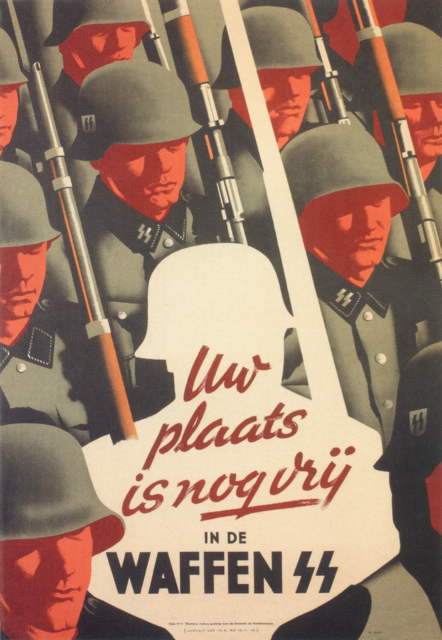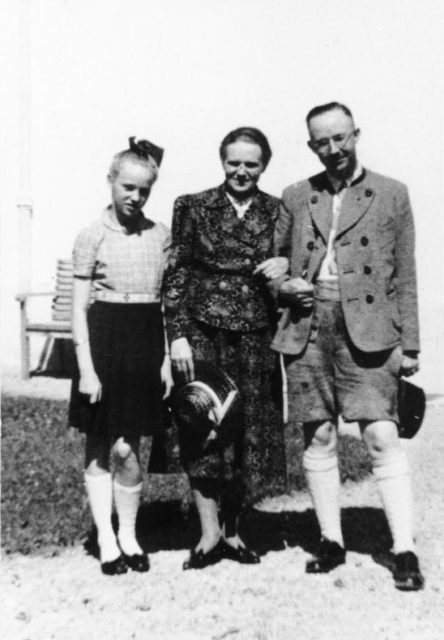In the aftermath of World War Two, most of the world wanted to punish those who had upheld the Nazi regime. The shocking revelation that Hitler had overseen the murder of millions of innocents led to war crimes trials and the hunting down of those who had assisted in these atrocities.
But a small minority of Germans took a different view. Either wanting to maintain Hitler’s warped agenda or unable to face the horror of what their leader had done, they set about reinventing history and defending those who had done the indefensible.
From this came Stille Hilfe, an organisation committed to supporting SS members facing punishment for their crimes.
The SS
The Schutzstaffel, known as the SS, was one of Hitler’s most important tools. A paramilitary wing of the Nazi party, for twenty years it inflicted surveillance and terror upon the German people and those they conquered. The violence and intimidation of the SS played a crucial role in Hitler’s rise to power, and in oppressing both his opponents and the groups he chose as scapegoats. The concentration camps that took millions of lives were run by the SS.
At the end of the Second World War, the SS collapsed. Many members went into hiding, trying to evade the consequences of their crimes. Others were captured. Many faced torture, beatings and extra-judicial executions at the hands of ex-prisoners or outraged allied forces. Those who survived faced the famous Nuremberg trials and in many cases execution.
The Secret Network

Some of those still sympathetic to the Nazi cause helped SS members to escape justice. Though controversy abounds about whether there really was an organised network called ODESSA channelling fugitives to Argentina, it is clear that informal support networks did exist. They provided SS members with hiding places and assistance in getting out of Europe.
Formal Founding
Several organisations arose from this movement, with a focus on supporting Nazis or rewriting history to hide their crimes. Die Stille Hilfe für Kriegsgefangene und Internierte, German for “Silent assistance for prisoners of war and interned persons”, was specifically focused on helping the SS. Its name was abbreviated to Stille Hilfe.
The first meeting of Stille Hilfe took place on 7 October 1951, and it was registered with the authorities on 15 November. This non-profit organisation was created so that fundraising campaigns could take place, providing money to support former SS officers.
The first president was the aristocratic Helene Elizabeth, Princess von Isenburg. Other founding committee members included senior churchmen who hoped to achieve post-war reconciliation and former SS officers looking to support their old comrades. Most notable was Lutheran Bishop Johannes Neuhäusler, who had been a captive in the Dachau camp, and whose presence showed that some within the organisation were genuinely concerned with reconciliation rather than helping monsters escape justice.
Aims
The stated aim of Stille Hilfe was to support SS officers arrested for war crimes. Legal assistance was provided to those facing trial for such offences. Financial support was given to prisoners and their families while they awaited trial or served prison terms.
Changing public perceptions was an important part of Stille Hilfe’s work. Press campaigns, petitions and letters were used to try to convince people that the men on trial had only been following orders, and should be seen as innocent. Great efforts were made to avoid the death penalty.
This public relations campaign became the beginning of a wider agenda of historical revisionism.
Gudrun Burwitz
Much of Stille Hilfe’s support from churches was withdrawn after the war crimes trials ended and prisoners were released after serving time in 1958. But the organisation continued to receive support from other sources. Donations and inheritances left it with considerable funds.

Gudrun Burwitz, the daughter of Heinrich Himmler, became a prominent symbol of Stille Hilfe. Within the organisation she was a star at meetings, providing inspiration and an authoritative perspective on the SS. She also became a high profile campaigner for those put on trial.
As the years passed, Holocaust deniers such as Thies Christophersen and Manfred Roeder tried to re-write history by claiming that the concentration camps were a lie. Stille Hilfe became a secretive supporter of such work, extending its previous propaganda agenda.
Controversy
As defenders of what most people consider indefensible, Stille Hilfe has inevitably caused controversy. Secretive and suspicious, they keep their inner workings hidden and avoid publishing details of their finances. Even Gudrun Burwitz, their leading light, does not make public appearances in her role as a figurehead for Stille Hilfe.
The organisation’s attempts to see history re-written in favour of the people they support have provoked outrage. Given its nature, the organisation draws some of its support from neo-Nazis, an unofficial affiliation which adds to its poor public image. It has provided legal aid for neo-Nazis facing prosecution.
Stille Hilfe’s charitable status has also caused controversy for public authorities. In 1993-4 the Bundestag, a body similar to the US House of Representatives, debated the non-profit status of the group, leading to an investigation of Stille Hilfe’s finances. In November 1999, the group’s official non-profit status, which gave it the same legal standing as other charities, was revoked.
A Dying Breed?
Stille Hilfe is on the decline. Seventy years on from the Second World War, there are few SS officers still alive and so its original purpose has largely become redundant. Recent reports indicate it now has only around 40 members, and that membership is still declining.
For seventy years Stille Hilfe has stood up for men accused of the some of the world’s worst atrocities. As it approaches its end, few will mourn the organisation’s passing.
